But What Does It SAY? How Three Historical Scripts Supercharged My Genealogy Research – Part 2
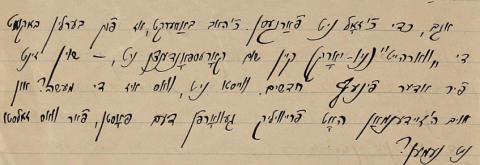
In my previous blog article, I described my Herculean effort to teach myself how to read Kurrentschrift handwriting. These efforts paid off big time. I learned an enormous amount of information about my family—information I would not have been able to uncover in any other way. But like many Jewish families, my ancestors came from many places in Europe. Learning only one writing system just wasn’t enough.
Many of my family branches originated in Galicia, which had been controlled by Austria in the nineteenth century. My newly acquired Kurrentschrift skills were extremely useful for ancestors from this region. However, my grandfather’s father’s family came from Warsaw, which until 1918 had been part of the Russian Empire (see: link). Many important documents for the history of this branch of my family were written in Russian. I had studied Russian in college and had spent a semester abroad in Moscow, so I felt prepared to take on the challenges of Russian cursive. As with German, I had a burning desire to learn it so that I could access these important documents.
Another Language, Another Cursive
Like English and German, Russian includes a handwritten version of its alphabet which is quite distinct from print. In general, Russian cursive presents many challenges. To see this, let’s consider English cursive for a moment. If a person does not write carefully, a cursive “e” can look like an “l” or a “c,” “o” can look like “a,” and the letter combination “cl” can look like a capital “I.” Several other letters can also be easily mistaken for one another. However, when written carefully enough, everything is distinct.
In contrast to English cursive, in Russian cursive some letters or letter combinations can look identical to others even if one writes absolutely perfectly. In fact, sometimes entire words can look identical to completely different words. In addition, some letters can look extremely similar to one another and are easily confused. Moreover, the angularity of Russian cursive can sometimes present significantly greater challenges than English cursive, even to native Russian speakers.
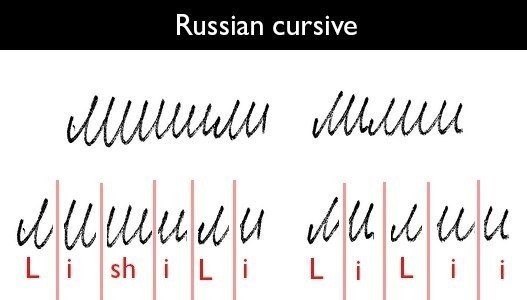
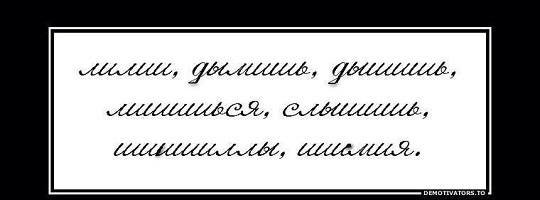
To make matters worse, old Russian cursive is significantly different from modern Russian. In 1917 there was a spelling reform in the Russian language, eliminating several extraneous letters from the Russian alphabet. Moreover, the hard sign (“tvyordiy znak”) was eliminated from the ends of most words. Although the letter was retained, it became relatively rare.
While reading pre-1917 material in printed Russian is relatively straightforward, a number of factors make cursive handwriting from this period significantly more challenging. In addition to the cursive versions of letters which were eliminated by the spelling reform, several other letters had multiple handwritten forms which are no longer encountered in modern Russian cursive. Even worse, many letters that are theoretically written the same way as today can still end up looking quite different. When I showed some of the Russian-language family documents I had collected to Russian exchange students at my university, they were baffled. Clearly, pre-1917 Russian cursive writing is quite challenging to the modern researcher.

Though I had studied modern Russian cursive during my semester in Moscow, pre-1917 cursive is so different that I could not make heads or tails of it at first. As with the German documents, I was so excited and so curious that I just had to find out what was in them. And just like with German, my familiarity with Russian gave me the confidence to proceed.
I taught myself how to read old Russian cursive the same way I did old German cursive. Again, I began with tutorials on Family Search and by studying letter charts. Old Russian was easier for me because since I already knew modern cursive, I only needed to learn half a dozen or so new letter forms from scratch. Still, I needed to learn how to recognize letters that were supposed to be familiar yet looked quite different from what I was used to.
Ultimately, I proceeded in the same way as I had previously: practice, practice, practice. I used documents I’d already collected in my family history research plus a variety of other documents I found online. After about fifty hours of intensive effort, I eventually achieved full proficiency.
One Language, Four Writing Systems
In the nineteenth and early twentieth centuries, most family records were written in the official languages of the countries where they were located. Thus, a surprising amount of knowledge can be gained about Jewish families without any knowledge of Hebrew. However, Hebrew does play an important role in Jewish genealogy.
Some records, particularly those from the Russian Pale of Settlement (the westernmost provinces of the Russian Empire, where the vast majority of Russian Jews resided prior to 1917), are written bilingually in Russian and Hebrew (or Yiddish). It can be quite useful to be able to check one version against the other to verify comprehension or to overcome poor scribal penmanship. Moreover, the differences between the two can be particularly revealing.
At the same time, some documents may be written only in Hebrew. These documents typically include tombstones, published books, older documents, ketubbas (religious marriage documents), and other special sources. Knowledge of Hebrew can be extremely helpful in extending research beyond the standard sources.
Traditional Hebrew letters as seen in Torah scrolls and prayer books are actually the second way of writing the language. The original alphabet, called “Paleo-Hebrew,” fell out of favor after the destruction of the First Temple in the early 6th century BCE. It has been virtually unused since then except by the Samaritans, a small ethno-religious community living in three small villages in Israel and the West Bank. Paleo-Hebrew is studied by contemporary scholars of the ancient Near East, but is no longer used by the Jewish community for any purpose.
The current, familiar Hebrew letters are derived from Aramaic letters, adapted to write the Hebrew language during the Second Temple period. In addition to this form, a cursive Hebrew script developed in medieval Europe. Still in widespread use today in Israel, its handwritten letters are not joined together—unlike the case with cursive English, German, or Russian. This same cursive handwriting was also used to write Yiddish. I was lucky enough to have learned both of these forms of Hebrew writing during the course of my Jewish education, which gave me a huge leg up on this kind of research.
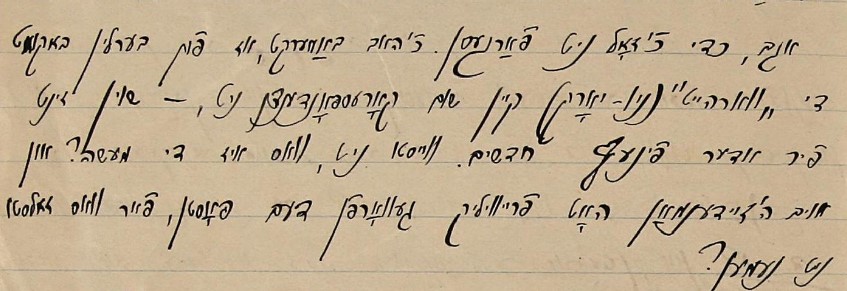
Pre-20th century Hebrew cursive is similar to modern cursive, but can still present some challenges. In historical Hebrew-language handwritten documents, letters can vary widely in size, spelling can fluctuate wildly, and spaces between words are frequently eliminated. Moreover, writers often add ornamental flourishes, and some of the letters can look a bit different to what we are used to—alef’s can look like two vertical lines (or two vav’s), lamed’s can look like long vertical lines, and he’s can end up looking something like rainbows. As with all forms of Hebrew, vowels are almost never indicated.
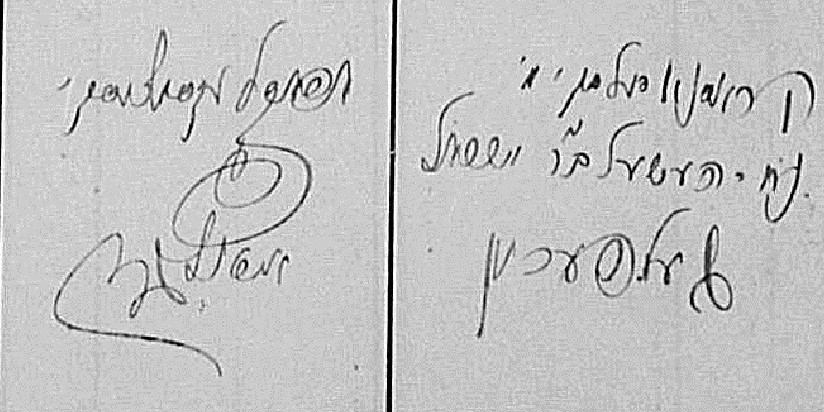
In addition to paleo-Hebrew, print, and cursive, a fourth form of Hebrew writing also exists. Although it is frequently called “Rashi script,” it is not actually a script but rather a typeface, as it is used for printed material rather than handwriting. Traditionally, it was used for Biblical commentary as a way of differentiating later additions from the original text. It was most famously for the works of medieval French scholar Rashi (Rabbi Shlomo Yitzchaki, 1040-1105), hence the name.
In the nineteenth century, Rashi type was often used in printed Hebrew material, both religious and secular. In many Hebrew-language books and newspapers, this typeface serves a similar function as italics in English. However, it is often used for whole paragraphs or sections at a time rather than for individual words.
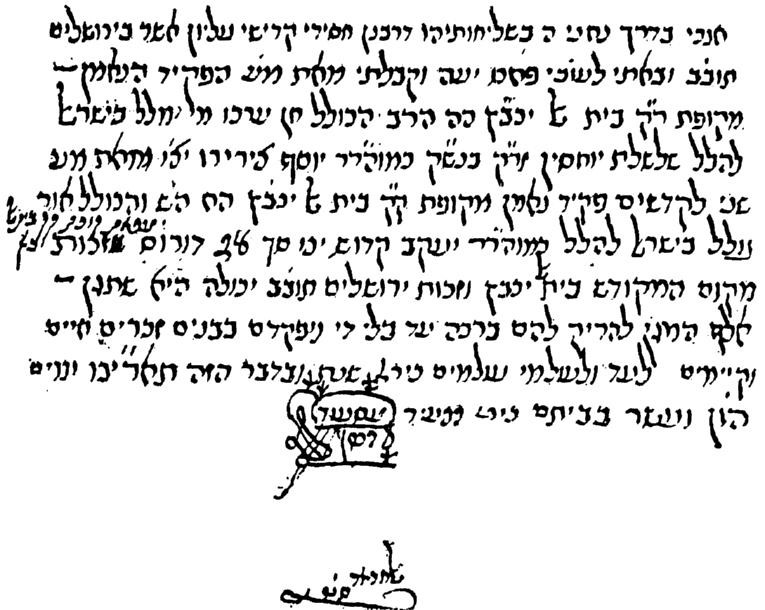
Along with the other forms of Hebrew (except for Paleo-Hebrew), I was introduced to Rashi typeface as part of my education. However, I received only a brief introduction to it in school, never reaching the same proficiency as with print and cursive. To be able to use it for research purposes, I needed to build a far greater proficiency. I used the same strategies to teach myself Rashi Hebrew as I had for pre-modern German and Russian—using charts to learn new letter forms and practicing for many hours by reading and translating documents I found online.
On the Road to Amazing Discoveries
All this work paid off. Keep reading to learn about some of the incredible discoveries I made by reading these historical scripts and the difference it has made to my personal and professional research.

Add new comment